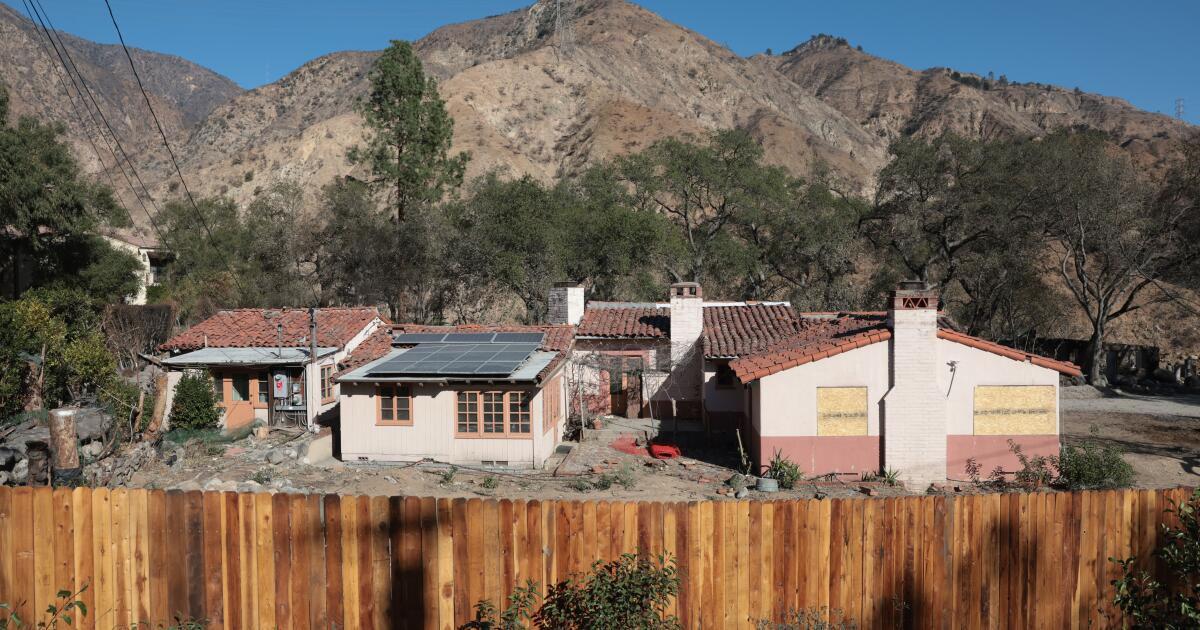Indigenous Practices Mitigated Eaton Fire Damage, Tongva Leaders Say
Tongva Leaders Credit Traditional Stewardship for Reduced Damage
The descendants of the Los Angeles Basin’s first people had not had land of their own for nearly 200 years.
Historic Land Return
Two years ago, a 1-acre property in suburban Altadena dotted with oak trees and shrubs became the first parcel of land returned to the Tongva people.
The fire that broke out in the hills near Eaton Canyon on January 7, charring more than 14,000 acres as of Friday, caused significant damage to the property, including the destruction of an old stone house and a garage.
Still, the losses could have been much worse if not for the Indigenous practices implemented on the land, according to the Tongva Taraxat Paxaavxa Conservancy, a nonprofit dedicated to restoring and protecting the land and cultural heritage of the Tongva people in the L.A. region.
Traditional Stewardship Practices
Wallace Cleaves, president of the conservancy’s board, credits traditional stewardship practices — including the removal of 97 fire-prone eucalyptus trees — with reducing the wildfire’s impact.
“We do believe that the work that we did to remove the invasive and dangerous species on the property very likely mitigated the damage, and made it much more possible for the native plants there to be able to recover and not have suffered as much,” he said.
Land Restoration and Community Revitalization
Since the land was returned to the Tongva people, the community has worked to restore the land in accordance with traditional ecological knowledge and to develop the property to support community gatherings.
Along with removing the eucalyptus trees, they have nurtured 50 full-grown oak trees and removed tons of old firewood and other debris, Cleaves said. Cultural burning is another traditional land stewardship practice, but the Tongva have so far been unable to implement it on the property because of permitting requirements.
“Our duty is to be good stewards of the land, of the plants and the animals that are under our care,” Cleaves said. “So a lot of our efforts went to restoring as much of the Indigenous habitat as we could.”
Expert Insights on Indigenous Land Stewardship
Nina Fontana, a research scientist at UC Davis focused on Indigenous land stewardship, said that Indigenous-led approaches, such as cultural burning, do help with mitigating and building resilience against climate change.
“When we think about Indigenous-led approaches, such as cultural burning or other Indigenous stewardship, it does help with mitigating and building resilience against climate change,” she said.
Fontana emphasized the importance of state and federal agencies working alongside tribal communities to incorporate Indigenous experience and knowledge. “It’s important to listen to Indigenous voices and to understand that the knowledge that communities hold is thousands and thousands and thousands of years of knowledge,” she said.
Conclusion
The Tongva people’s determination to restore their ancestral land and implement traditional practices has not only preserved their cultural heritage but has also contributed to the mitigation of the wildfire’s impact. This serves as a powerful example of the importance of Indigenous-led approaches to land management and the critical role that communities must play in shaping the future of wildfire prevention and mitigation.
FAQs
Q: How did the Tongva people come to own the 1-acre property in Altadena?
A: The property was transferred to the Tongva people in 2022 by Sharon Alexander, whose family had built a Spanish ranch-style home on the land in 1931.
Q: What traditional land stewardship practices did the Tongva people implement on the property?
A: The Tongva people removed 97 fire-prone eucalyptus trees, nurtured 50 full-grown oak trees, and removed tons of old firewood and other debris.
Q: Can the Tongva people return to the property for ceremonies soon?
A: Cleaves is hopeful that the Tongva people will be able to return to the property for ceremonies later this year.
Q: What is the significance of oak trees to the Tongva people?
A: The oak tree is one of the Tongva people’s sacred plants; its acorns are a staple in traditional meals.


